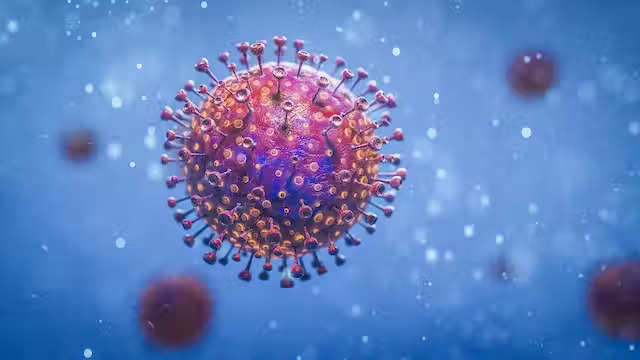As COVID-19 continues to make headlines in the United States, alongside a surge in flu cases, the nation grapples with a significant increase in COVID-19 cases. This isn’t the first time the U.S. has faced such a surge, as the past two winters witnessed spikes in cases during December and January. Health experts fear that history may repeat itself in the upcoming winter.
Regardless of your vaccination status, taking responsibility for your safety and security from the virus is crucial. In this article, we’ll provide an in-depth understanding of the CDC guidelines for COVID-19 exposure, empowering you to protect yourself and others effectively.
A Timeline of COVID-19
Before delving into the CDC guidelines for COVID-19 exposure, let’s briefly review the timeline of the virus.
COVID-19, like other viruses, has an incubation period during which you may be exposed to the virus without developing associated symptoms. Initially, the virus had an incubation period of around 14 days, but with the currently dominant variants, this period has shortened to approximately 5 days.
This means that if you are exposed to the currently prevalent variants of COVID-19, you might develop symptoms within the first 5 days of exposure. For most individuals in the United States, symptoms resolve within 5 to 10 days, though some may require medical assistance or hospitalization. It’s important to note that this timeline may not apply to everyone.
CDC Guidelines for COVID-19 Exposure
What should you do if you get exposed to COVID-19? The Centers for Disease Control and Prevention (CDC) provides clear guidelines for COVID-19 exposure. If you’ve been exposed to the virus, it’s recommended to wear a high-quality mask as soon as you become aware of the exposure.
Even during the incubation period when you may not exhibit symptoms, you can still transmit the virus to others. It’s essential to avoid contact with individuals who are more vulnerable to developing severe symptoms.
Studies indicate that the incubation period for the currently dominant variants of COVID-19 is around 5 days. Most exposed individuals will develop symptoms associated with the virus within this timeframe. While some may remain asymptomatic, they represent a minority.
If immediate isolation is not feasible due to financial constraints, follow COVID-19 protocols diligently. This includes wearing high-quality face masks, practicing social distancing, and using hand sanitizer. Inform your employer about your exposure to the virus and encourage colleagues to adopt similar precautions.

What to Do When You Test Positive for COVID-19
If you’ve been exposed to COVID-19 and begin experiencing symptoms within the first 5 days of exposure, resulting in a positive test, it’s crucial to isolate yourself promptly. Inform your close contacts, including friends, family, and employer, and advise them to take precautions and undergo testing.
- Regardless of symptom severity, remain in isolation for at least 5 days after testing positive.
- Avoid sharing personal items with family members, including utensils and bathrooms.
- Refrain from visiting places where mask-wearing is not possible for 10 days from the onset of symptoms or the test result date.
- If feasible, improve ventilation in your home to ensure adequate airflow.
- While some individuals may not require medical treatment for symptom resolution, consulting your healthcare provider regarding the potential for severe symptoms is advisable.
- Avoid using public transportation until at least the 10th day following your test result.
It’s important to note that these guidelines are voluntary but essential to safeguard your health and protect your loved ones from potential infection.
Ending Your Isolation After COVID-19 Exposure
To conclude, let’s review the guidelines for ending your isolation after COVID-19 exposure:
- The duration of your isolation depends on symptom severity and your condition.
- As per the latest CDC guidelines, asymptomatic individuals can end isolation after the 5th day following their test result.
- Those who can remain fever-free for 24 hours without fever-reducing medication can also consider ending isolation after the 5th day.
- Calculate the 5th day from the onset of symptoms or the test result date.
- Continue testing regularly until the 10th day to ensure you are no longer infectious.
For individuals with severe symptoms or those hospitalized due to COVID-19, there are no fixed rules. Focus on recovery and follow your healthcare provider’s guidance, as currently dominant variants of COVID-19, while not posing greater risks, remain a significant threat.
In conclusion, adhering to the CDC guidelines for COVID-19 exposure is vital to curb the virus’s spread and protect your well-being. Additionally, vaccination remains strongly recommended by the CDC to further bolster our defenses against the virus. Maintain a 14-day gap between vaccination and symptom onset to ensure the effectiveness of the vaccine.
FAQs About CDC Guidelines for COVID Exposure:
What are CDC guidelines for COVID-19 exposure?
CDC guidelines for COVID-19 exposure provide recommendations for individuals who have been in close contact with someone infected with the virus. They include instructions on isolation, testing, mask-wearing, and other preventive measures.
How long is the incubation period for COVID-19 according to CDC guidelines?
The incubation period for COVID-19, as per CDC guidelines, is typically around 5 days for the currently dominant variants of the virus. It was longer for the original variant, at approximately 14 days.
What should I do if I’ve been exposed to someone with COVID-19, but I’m not experiencing symptoms?
If you’ve been exposed to COVID-19 but aren’t showing symptoms, CDC guidelines recommend wearing a high-quality mask, practicing social distancing, and using hand sanitizer. It’s crucial to avoid contact with vulnerable individuals.
When should I wear a mask if I’ve been exposed to COVID-19?
According to CDC guidelines, you should wear a mask as soon as you become aware of your exposure, even during the incubation period when symptoms may not have developed yet.
Isolation or quarantine: What’s the difference, and when should I do either?
Isolation is for individuals who have tested positive for COVID-19, while quarantine is for those who have been exposed to the virus but are not yet showing symptoms. CDC guidelines provide specific instructions for each scenario.
What precautions should I take if I’ve tested positive for COVID-19?
If you’ve tested positive for COVID-19, CDC guidelines recommend staying in isolation for at least 5 days from the onset of symptoms or the test result date. You should also avoid sharing personal items, improve home ventilation, and consult your healthcare provider if needed.
How can I safely inform my close contacts about my positive COVID-19 test?
You can inform your close contacts about your positive COVID-19 test by communicating with them directly and advising them to take precautions, such as getting tested and following CDC guidelines for exposure.
When can I end my isolation after testing positive for COVID-19?
According to CDC guidelines, asymptomatic individuals can end their isolation after the 5th day from the test result date. Those who are fever-free for 24 hours without fever-reducing medication can also consider ending isolation after the 5th day.
Are there any exceptions to the 10-day isolation period after COVID-19 exposure?
There are no fixed exceptions to the 10-day isolation period after COVID-19 exposure. However, the duration of isolation depends on symptom severity and individual condition, as per CDC guidelines.
What should I do if I develop severe symptoms after being exposed to COVID-19, according to CDC guidelines?
If you develop severe symptoms after exposure to COVID-19, it is recommended to consult with your healthcare provider. CDC guidelines do not provide specific rules for individuals with severe symptoms, and medical attention may be necessary for your recovery.
